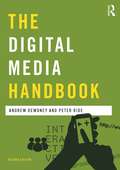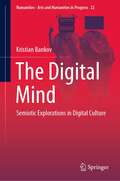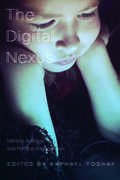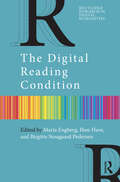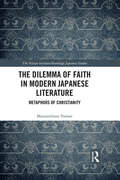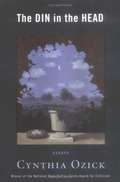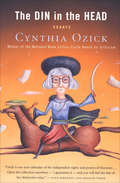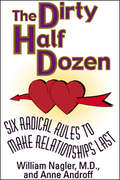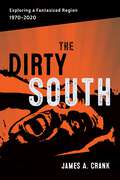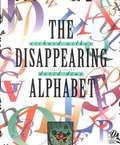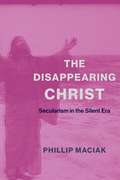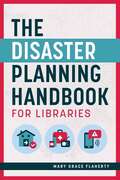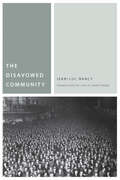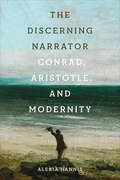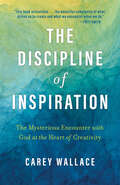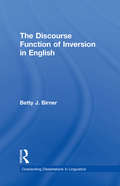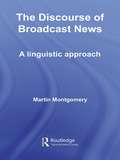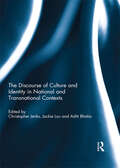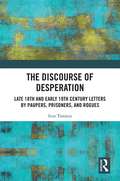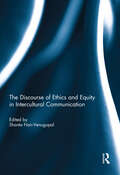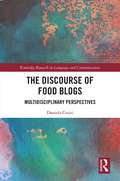- Table View
- List View
The Digital Media Handbook (Media Practice)
by Andrew Dewdney Peter RideThe new edition of The Digital Media Handbook presents an essential guide to the historical and theoretical development of digital media, emphasising cultural continuity alongside technological change, and highlighting the emergence of new forms of communication in contemporary networked culture. Andrew Dewdney and Peter Ride present detailed critical commentary and descriptive historical accounts, as well as a series of interviews from a range of digital media practitioners, including producers, developers, curators and artists. The Digital Media Handbook highlights key concerns of today’s practitioners, analysing how they develop projects, interact and solve problems within the context of networked communication. The Digital Media Handbook includes: Essays on the history and theory of digital media Essays on contemporary issues and debates Interviews with digital media professionals A glossary of technical acronyms and key terms.
The Digital Mind: Semiotic Explorations in Digital Culture (Numanities - Arts and Humanities in Progress #22)
by Kristian BankovThis book reveals the core features of digital culture, examined by means of semiotic models and theories. It positions commercial and market principles in the center of the digital semiosphere, avoiding the need to force the new cultural reality into the established textualist or pragmatist paradigms. The theoretic insights and case studies presented here argue for new semiotic models of inquiry that include working with big data, user experience and nethnography, along with conventional approaches.The book develops a new concept of identity in the digital age, analyzing the digital flows of recognition and value, which led to the tremendous success of Social Media and the Web 2.0 era. Self-expression, entertainment and consumerism are seen as the major drivers of identity formation in the post-truth era, where the self can no longer be considered independently of a given person’s communication devices, where a substantial part of it is stored and actualized. It will be of interest to semioticians and researchers working on digital culture.
The Digital Nexus: Identity, Agency, and Political Engagement
by Raphael FoshayOver half a century ago, in The Gutenberg Galaxy (1962), Marshall McLuhan noted that the overlap of traditional print and new electronic media like radio and television produced widespread upheaval in personal and public life: Even without collision, such co-existence of technologies and awareness brings trauma and tension to every living person. Our most ordinary and conventional attitudes seem suddenly twisted into gargoyles and grotesques. Familiar institutions and associations seem at times menacing and malignant. These multiple transformations, which are the normal consequence of introducing new media into any society whatever, need special study. The trauma and tension in the daily lives of citizens as described here by McLuhan was only intensified by the arrival of digital media and the Web in the following decades. The rapidly evolving digital realm held a powerful promise for creative and constructive good—a promise so alluring that much of the inquiry into this new environment focused on its potential rather than its profound impact on every sphere of civic, commercial, and private life. The totalizing scope of the combined effects of computerization and the worldwide network are the subject of the essays in The Digital Nexus, a volume that responds to McLuhan’s request for a “special study” of the tsunami-like transformation of the communication landscape. These critical excursions provide analysis of and insight into the way new media technologies change the workings of social engagement for personal expression, social interaction, and political engagement. The contributors investigate the terms and conditions under which our digital society is unfolding and provide compelling arguments for the need to develop an accurate grasp of the architecture of the Web and the challenges that ubiquitous connectivity undoubtedly delivers to both public and private life. Contributions by Ian Angus, Maria Bakardjieva, Daryl Campbell, Sharone Daniel, Andrew Feenberg, Raphael Foshay, Carolyn Guertin, David J. Gunkel, Bob Hanke, Leslie Lindballe, Mark McCutcheon, Roman Onufrijchuk, Josipa G. Petrunić, Peter J. Smith, Lorna Stefanick, Karen Wall.
The Digital Reading Condition
by Iben Have Birgitte Stougaard Pedersen Maria EngbergThis volume offers a critical overview of digital reading practices and scholarly efforts to analyze and understand reading in the mediatized landscape. Building on research about digital reading, born-digital literature, and digital audiobooks, The Digital Reading Condition explores reading as part of a broader cultural shift encompassing many forms of media and genres. Bringing together research from media and literary studies, digital humanities, scholarship on reading and learning, as well as sensory studies and research on multimodal and multisensory media reception, the authors address and challenge print-biased conceptions of reading that are still prevalent in research, whether the reading medium is print or digital. They argue that the act of reading itself is changing, and rather than rejecting digital media as unsuitable for sustained or focused reading practices, they argue that the complex media landscape challenges us to rethink how to define reading as a mediated practice. Presenting a truly interdisciplinary perspective on digital reading practices, this volume will appeal to scholars and graduate students in communication, media studies, new media and technology, literature, digital humanities, literacy studies, composition, and rhetoric.
The Digitally Disposed: Racial Capitalism and the Informatics of Value (Electronic Mediations #61)
by Seb FranklinLocates the deep history of digitality in the development of racial capitalism Seb Franklin sets out a media theory of racial capitalism to examine digitality&’s racial-capitalist foundations. The Digitally Disposed shows how the promises of boundless connection, flexibility, and prosperity that are often associated with digital technologies are grounded in racialized histories of dispossession and exploitation. Reading archival and published material from the cybernetic sciences alongside nineteenth-century accounts of intellectual labor, twentieth-century sociometric experiments, and a range of literary and visual works, The Digitally Disposed locates the deep history of digitality in the development of racial capitalism.Franklin makes the groundbreaking argument that capital&’s apparently spontaneous synthesis of so-called free individuals into productive circuits represents an &“informatics of value.&” On the one hand, understanding value as an informatic relation helps to explain why capital was able to graft so seamlessly with digitality at a moment in which it required more granular and distributed control over labor—the moment that is often glossed as the age of logistics. On the other hand, because the informatics of value sort populations into positions of higher and lower capacity, value, and status, understanding their relationship to digitality requires that we see the digital as racialized and gendered in pervasive ways.Ultimately, The Digitally Disposed questions the universalizing assumptions that are maintained, remade, and intensified by today&’s dominant digital technologies. Vital and far-reaching, The Digitally Disposed reshapes such fundamental concepts as cybernetics, informatics, and digitality.
The Dilemma of Faith in Modern Japanese Literature: Metaphors of Christianity (Nissan Institute/Routledge Japanese Studies)
by Massimiliano TomasiThe first book-length study to explore the links between Christianity and modern Japanese literature, this book analyses the process of conversion of nine canonical authors, unveiling the influence that Christianity had on their self-construction, their oeuvre and, ultimately, the trajectory of modern Japanese literature. Building significantly on previous research, which has treated the intersections of Christianity with the Japanese literary world in only a cursory fashion, this book emphasizes the need to make a clear distinction between the different roles played by Catholicism and Protestantism. In particular, it argues that most Meiji and Taishō intellectuals were exposed to an exclusively Protestant and mainly Calvinist derivation of Christianity and so it is against this worldview that the connections between the two ought to be assessed. Examining the work of authors such as Kitamura Tōkoku, Akutagawa Ryūnosuke and Nagayo Yoshirō, this book also contextualises the spread of Christianity in Japan and challenges the notion that Christian thought was in conflict with mainstream literary schools. As such, this book explains how the dualities experienced by many modern writers were in fact the manifestation of manifold developments which placed Christianity at the center, rather than at the periphery, of their process of self-construction. The Dilemma of Faith in Modern Japanese Literature will be of great interest to students and scholars of Japanese modern literature, as well as those interested in Religious Studies and Japanese Studies more generally.
The Din in the Head: Essays
by Cynthia OzickOne of America's foremost novelists and critics, Cynthia Ozick has won praise and provoked debate for taking on challenging literary, historical, and moral issues. Her new collection of spirited essays focuses on the essential joys of great literature, with particular emphasis on the novel. With razor-sharp wit and an inspiring joie de vivre, she investigates unexpected byways in the works of Leo Tolstoy, Saul Bellow, Helen Keller, Isaac Babel, Sylvia Plath, Susan Sontag, and others. In a posthumous and hilariously harassing "(Unfortunate) Interview with Henry James," Ozick's hero is shocked by a lady reporter. In "Highbrow Blues" and in reflections on her own early fiction, she writes intimately of "the din in our heads, that relentless inner hum," and the curative power of literary imagination. The Din in the Head is sure to please fans of Ozick, win her new readers, and excite critical controversy and acclaim.
The Din in the Head: Essays
by Cynthia OzickA collection of essays on the joys of great literature from the New York Times–bestselling author and winner of the National Book Critics Circle Award. One of America&’s foremost novelists and critics, Cynthia Ozick has won praise and provoked debate for taking on challenging literary, historical, and moral issues. Her new collection of spirited essays focuses on the essential joys of great literature, with particular emphasis on the novel. With razor-sharp wit and an inspiring joie de vivre, she investigates unexpected byways in the works of Leo Tolstoy, Saul Bellow, Helen Keller, Isaac Babel, Sylvia Plath, Susan Sontag, and others. In a posthumous and hilariously harassing &“(Unfortunate) Interview with Henry James,&” Ozick&’s hero is shocked by a lady reporter. In &“Highbrow Blues,&” and in reflections on her own early fiction, she writes intimately of &“the din in our heads, that relentless inner hum,&” and the curative power of literary imagination. The Din in the Head is sure to please fans of Ozick, win her new readers, and excite critical controversy and acclaim. &“Open the collection anywhere—I guarantee it—and you will feel the bite of her distinctive voice.&” —Sven Birkerts, Los Angeles Times &“The passion that fills these essays is invigorating. In our age of irony and commercial pandering, we need writers like Ozick.&” —Danielle Chapman, Chicago Tribune
The Dinosaur Alphabet Book (Jerry Pallotta's Alphabet Books)
by Jerry PallottaThe perfect way to introduce children to the fascinating world of dinosaurs. Full of interesting facts--did you know some dinosaurs had sharp front teeth while others had no front teeth at all? This alphabet book explores both the known and the not-so-well known dinosaurs.Meet the heterodontosaurus (one of the smallest known to exist), the megalosaurus (the first dinosaur ever discovered), the iguanodon, the ultrasaurus, and more!Once again, Jerry Pallotta and Ralph Masiello have combined their talents to create a unique children's book that will inform and entertain young readers.
The Dirty Half Dozen: Six Radical Rules to Make Relationships Last
by Anne Androff William NaglerSay goodbye to conventional wisdom and say hello to "The Dirty Half Dozen." Here is a fresh, iconoclastic set of rules for improving your relationship dramatically.<P>Based on thirty years of psychiatric literature, including over 1,000 studies on relationships, as well as the author's own personal relationship experience, this book shows how satisfying, long-term relationships are not about abstract concepts like romance, honesty, or intimacy. They are about something far more simple. <P>Learn the value of the little white lie, the destructive potential of the "petty" differences, the myth of the perfect relationship, the care and feeding of the happy, lasting relationship within tension-free surroundings, and other secrets that every couple needs to know.
The Dirty South: Exploring a Fantasized Region, 1970–2020 (Southern Literary Studies)
by James A. CrankThe Dirty South examines the shifting significances of the South as a constructed, fantasized region in the American psyche, particularly its frequent association with tropes of dirt that emphasize soil, garbage, trash, grit, litter, mud, swamp water, slime, and pollution. Beginning with iconic works from the 1970s such as Deliverance and The Texas Chainsaw Massacre, James A. Crank traces the image of a “dirty” South into the twenty-first century to explore the social, political, and psychological effects of the region’s hold on the imaginations of southerners and nonsoutherners alike.With a focus on media forms through which southern identity gets articulated and questioned—including horror movies, Swamp Thing comics, and popular music by artists such as Waylon Jennings and OutKast—The Dirty South probes the sustained fascination with southern dirtiness while reflecting on its causes and consequences since the end of the civil rights era. Highlighting the period from 1970 to 2020, during which the South began to represent several new possible identities for the nation as a whole and for the area itself, Crank considers the ways that southerners have used depictions of dirt to create and police boundaries and to contest those boundaries. Each chapter pairs prominent literary or cultural texts from the 1970s with more contemporary works, such as Jordan Peele’s film Get Out, which recycle similar investments or, critically, challenge the inherent whiteness of the earlier images.By historicizing fantasies of the region and connecting them to the first decades of the twenty-first century, The Dirty South reveals that notions about southern dirtiness proliferate not because they lend authenticity or relevancy to the U.S. South, but because they aid so conspicuously in the zombified work of tethering investors (real and imagined) to a graveyard of ideas.
The Disappearing Alphabet
by Richard WilburPulitzer Prize-winning poet Richard Wilbur turns his sharp eye to the noble alphabet and imagines what life would be like without these twenty-six little--but powerful--letters. Packed with humor and witty subtleties, the verse in this captivating picture book is splendidly matched by Caldecott Medal winner David Diaz's hilariously clever illustrations.
The Disappearing Christ: Secularism in the Silent Era
by Phil MaciakAt the turn of the twentieth century, American popular culture was booming with opportunities to see Jesus Christ. From the modernized eyewitness gospel of Ben-Hur to the widely circulated passion play films of Edison, Lumière, and Pathé; from D. W. Griffith’s conjuration of a spectral white savior in Birth of a Nation to W. E. B. Du Bois’s “Black Christ” story cycle, Jesus was constantly and inventively visualized across media, and especially in the new medium of film. Why, in an era traditionally defined by the triumph of secular ideologies and institutions, were so many artists rushing to film Christ’s miracles and use his story and image to contextualize their experiences of modernity?In The Disappearing Christ, Phillip Maciak examines filmic depictions of Jesus to argue that cinema developed as a model technology of secularism, training viewers for belief in a secular age. Negotiating between the magic trick and the documentary image, the conflicting impulses of faith and skepticism, the emerging aesthetic of film in this period visualized the fraught process of secularization. Cinematic depictions of an appearing and disappearing Christ became a powerful vehicle for Americans to navigate a rapidly modernizing society. Studying these films alongside a multimedia, interdisciplinary archive of novels, photographs, illustrations, and works of theology, travel writing, and historiography, The Disappearing Christ offers a new narrative of American cultural history at the intersection of cinema studies and religious studies.
The Disaster Planning Handbook For Libraries
by Mary Grace FlahertyLibraries are in a unique position to aid communities during times of adversity, and this comprehensive handbook’s practical tools and expert guidance will help ensure that your library is thoroughly prepared for emergency response and recovery. Your library is a vital information hub and resource provider every single day, and that’s doubly true when calamity strikes. In fact, your library’s role as an “essential community function” during disasters is now encoded in U.S. law. Engaging as a partner in planning and preparedness will build much-needed community support should disaster strike, and even a basic plan will also save you time and stress later on. No matter where your library is in the disaster planning cycle, this handbook will make the process clearer and less daunting. You’ll get tools, activities, easy-to-adapt templates, and hands-on guidance on such topics as the six phases of disaster response; 15 first-hand accounts of library disaster planning or responses, helping you identify the library services most needed during a disaster; three essential factors that will shape the form of your disaster plan; preparing for hurricanes, tornadoes, fires, floods, and earthquakes; ideas for connecting with your community’s emergency response teams; federal government planning resources; pointers on working with state and local governments; a sample Memorandum of Understanding to outline mutual support for a speedier recovery; recommended courses and training, many of which are free; targeted advice for archives and special collections; sample building inspection checklists; and recommended games to help children and families prepare.
The Disavowed Community (Commonalities)
by Jean-Luc NancyOver thirty years after Maurice Blanchot writes The Unavowable Community (1983)—a book that offered a critical response to an early essay by Jean-Luc Nancy on “the inoperative community”—Nancy responds in turn with The Disavowed Community. Stemming from Jean-Christophe Bailly’s initial proposal to think community in terms of “number” or the “numerous,” and unfolding as a close reading of Blanchot’s text, Nancy’s new book addresses a range of themes and motifs that mark both his proximity to and distance from Blanchot’s thinking, from Bataille’s “community of lovers” to the relation between community, communitarianism, and being-in-common; to Marguerite Duras, to the Eucharist. A key rethinking of politics and the political, this exchange opens up a new understanding of community played out as a question of avowal.
The Discarded Image: An Introduction to Medieval and Renaissance Literature
by C. S. LewisIn The Discarded Image, C.S. Lewis paints a lucid picture of the medieval world view, providing the historical and cultural background to the literature of the Middle Ages and Renaissance. It describes the "image" discarded by later years as "the medieval synthesis itself, the whole organization of their theology, science and history into a single, complex, harmonious mental model of the universe." This, Lewis's last book, has been hailed as "the final memorial to the work of a great scholar and teacher and a wise and noble mind."
The Discerning Narrator: Conrad, Aristotle, and Modernity
by Alexia HannisThe Discerning Narrator sheds new light on Joseph Conrad’s controversial critique of modernity and modernization by reading his work through an Aristotelian lens. The book proposes that we need Aristotle – a key figure in Conrad’s education – to recognize the profound significance of Conrad’s artistic vision. Offering Aristotelian analyses of Conrad’s letters, essays, and four works of fiction, Alexia Hannis illuminates the philosophical roots and literary implications of Conrad’s critique of modernity. Hannis turns to Aristotle’s ethical formulations to trace what she calls "the discerning narrator" in Conrad’s oeuvre: a compassionate yet sceptical guide to appraising character and conduct. The book engages with past and current Conrad scholarship while drawing from Aristotle’s Poetics, Politics, and Nicomachean Ethics to offer original philosophical analyses of Conrad’s works. Drawing on Aristotle, Hannis provides a fresh context for making sense of Conrad’s self-differentiation from modernity. As a result, The Discerning Narrator provides an affirmation of literature’s invitation to wonder about the possibilities inherent in human nature, including the potential for painful depravity, heroic excellence, and ordinary human happiness.
The Discipline of Inspiration: The Mysterious Encounter with God at the Heart of Creativity
by Carey WallaceLearn where inspiration comes from and how to harness it in your life and work. We all know the sensation of inspiration. It&’s what tells a painter what to paint and a singer how to sing—and what prompts us to throw a new spice into an old recipe. But what is inspiration? When we train artists, we typically identify them by their talent and train them in technique. We talk very little about the crucial creative spark of inspiration. Where does it come from? What does it want from us? How can we get more of it? In The Discipline of Inspiration, Carey Wallace meditates on this vital spark and on the ways artists have negotiated with it across genres and throughout history. She also offers practical methods—including silence, community, and rest—to help everyone access more inspiration, more often. Artists will develop a fresh perspective on inspiration and learn new tools for their creative practice. And readers from all walks of life will discover the transformative power of inspiration in every aspect of their lives.
The Discourse Function of Inversion in English (Outstanding Dissertations in Linguistics)
by Betty BirnerFirst published in 1997. Routledge is an imprint of Taylor & Francis, an informa company.
The Discourse Strategies of Imperialist Writing: The German Colonial Idea and Africa, 1848-1945 (Routledge Critical Studies in Discourse)
by Felicity RashIn this monograph, Felicity Rash examines German colonialist texts through the lens of linguistics, using multiple analytic approaches in order to contribute to the study of ideological discourse. Focusing on texts from Germany’s colonial period during the Second Reich, the book describes the discourse strategies employed in a wide variety of colonialist discourses, from propagandistic and journalistic writing to autobiographical and fictional accounts of life in Germany's African colonies. The methodologies Rash employs include the Discourse Historical Approach and Cognitive Metaphor Theory, and the book aims to develop a new model for the analysis of expansionist nationalist writing. Little detailed analysis exists of the types of texts taken as primary sources, and Rash provides English translations of German quotations, in addition to drawing upon her research in former German colonies in Africa. Rash’s research will be of interest to linguists, historians, Germanists, and social and political scientists, and lays the groundwork for future interdisciplinary analyses of German colonialism.
The Discourse of Broadcast News: A Linguistic Approach
by Martin MontgomeryIn this timely and important study Martin Montgomery unpicks the inside workings of what must still be considered the dominant news medium: broadcast news. Drawing principally on linguistics, but multidisciplinary in its scope, The Discourse of Broadcast News demonstrates that news programmes are as much about showing as telling, as much about ordinary bystanders as about experts, and as much about personal testimony as calling politicians to account. Using close analysis of the discourse of television and radio news, the book reveals how important conventions for presenting news are changing, with significant consequences for the ways audiences understand its truthfulness. Fully illustrated with examples and including detailed examination of the high profile case of ex-BBC journalist Andrew Gilligan, The Discourse of Broadcast News provides a comprehensive study which will challenge our current assumptions about the news. The Discourse of Broadcast News will be a key resource for anyone researching the news, whether they be students of language and linguistics, media studies or communication studies.
The Discourse of Culture and Identity in National and Transnational Contexts
by Christopher J. Jenks, Jackie Lou and Aditi BhatiaThis collection examines and uses discourse to promote a better understanding of culture and identity, with the primary goal of advancing an understanding of how discourse can be used to examine social and linguistic issues. Many of the contributions explore how the formation of culture and identity is shaped by national and transnational issues, such as migration, immigration, technology, and language policy. The collection contributes to a better understanding of the process of intercultural communication research, as each author takes a different theoretical or methodological approach to examining discourse. Although different aspects of discourse are analyzed in this collection, each contribution examines issues and concepts that are central to understanding and carrying out intercultural communication research (e.g., structure and agency, static and dynamic cultural constructs, sociolinguistic scales, power and discourse, othering and alienness, native and non-native). This book was originally published as a special issue of Language and Intercultural Communication.
The Discourse of Desperation: Late 18th and Early 19th Century Letters by Paupers, Prisoners, and Rogues (Routledge Studies in Linguistics)
by Ivor TimmisThis book discusses how the poor and desperate in the late eighteenth and early nineteenth centuries mobilised their linguistic resources in pursuit of vital pragmatic goals, drawing on three corpora of letters written by the poor. The main question addressed by the book is, ‘How were the poor, often armed only with low levels of education and literacy, able to meet the challenge of writing letters vital to their interests, even to their survival?’ Timmis argues that the answer lies in the highly strategic approach adopted by the writers, particularly evident in the way formulaic language is used in the pauper and prisoner letters. Formulaic language supports the writers in producing intelligible letters in what they consider an appropriate tone but also allows them to exploit popular cultural motifs of the time. Data is drawn from three sources: pauper letters by the poor applying for parish relief, from around 1795 to 1834; prisoner letters by women awaiting deportation to Australia for defrauding the Bank of England in the early nineteenth century; and anonymous letters by the poor demanding money with menaces. Comparison with the Mayhew Corpus of interviews with the London poor in the 1850s reinforces the idea that part of the writers’ approach was to orient away from the vernacular towards a style they perceived to be more elevated. Showing how resourceful people can be in communicating their needs in crises and in turn surfacing new insights into literacy and demotic language awareness, this book will be of interest to students and scholars in corpus linguistics and social history.
The Discourse of Ethics and Equity in Intercultural Communication
by Shanta Nair-VenugopalThis book examines the notions of ethics and equity in relation to language and communication in intercultural relations. Although these notions are often discussed, they are not always addressed with regard to specifi c subjects. Much intercultural discourse and dialogue in recent times has been coloured by the clash of civilizations (as described by Samuel Huntington), terrorist attacks such as 9/11, and the indelible effects which these events have had on dealings between different peoples, cultures and religions. This book discusses ethics and equity with regard to marginalized and privileged minorities, victims of abuse and of confl ict, researchers and practitioners, and language learners and speaker/users. It opens up spaces for a critical discourse of ethics and equity in language and intercultural communication as ‘new’ knowledge. This book was originally published as a special issue of Language and Intercultural Communication.
The Discourse of Food Blogs: Multidisciplinary Perspectives (Routledge Research in Language and Communication)
by Daniela CesiriThis volume adopts a multidisciplinary perspective in analyzing and understanding the rich communicative resources and dynamics at work in digital communication about food. Drawing on data from a small corpus of food blogs, the book implements a range of theoretical frameworks and methodological approaches to unpack the complexity of food blogs as a genre of computer-mediated communication. This wide-ranging framework allows for food blogs’ many layered components, including recipes, photographs, narration in posts, and social media tie-ins, to be unpacked and understood at the structural, visual, verbal, and discourse level in a unified way. The book seeks to provide a comprehensive account of this popular and growing genre and contribute to our understandings of digital communication more generally, making this key reading for students and scholars in computer-mediated communication, multimodality, critical discourse analysis, corpus linguistics, and pragmatics.
